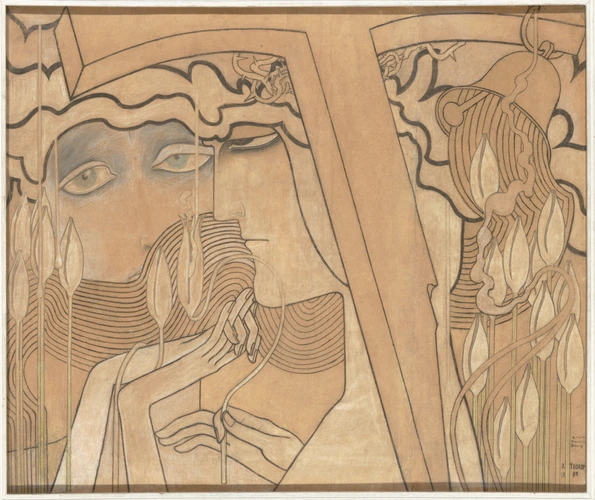Jan Toorop, born in Java in 1858 when it was still a Dutch colony, soon came to Europe and studied at the Amsterdam Academy from 1881 before continuing his studies in Brussels, Paris and London. Receptive to the many aesthetic currents then running through Europe, he soon gave up Naturalism for Neo-Impressionism, before devoting a few short years to Symbolism.
1893, the year of this astonishing pastel, which was designed as a project for a stained-glass window, was the peak of his participation in the Symbolist movement.
The iconography, which originally continued over the frame, is highly complex: the female face with wide-open eyes represents Desire, who is praying that the still closed lily might receive the white dew of the rain falling from the clouds above her.
Behind the cross, seen from the back, which leaves only a part of Christ's crown of thorns visible, another face seen from the side with half-closed eyes is that of Satisfaction. The figure is holding a half-open lily into which the fertilising spiritual dew has already fallen, releasing its perfume. The linear environment is made up of a band of parallel lines winding through the composition; they represent sounds coming from the bell on the right which travel through the world supporting faith, a reminder, as Toroop said, of "the pure mystical periods of yesteryear".
In 1911, the artist gave this echo of complex mysticism, highly critical of contemporary society, to Maurice Denis, a painter and poet with a clear, direct faith, in exchange for a Mother and Child now in the Kröller-Müller museum, Otterlo, in the Netherlands.
https://www.musee-orsay.fr/en/artworks/le-desir-et-lassouvissement-18468

It's mildly interesting that if you told me this was drawn in the 1960's by some hippy, I wouldn't question you.